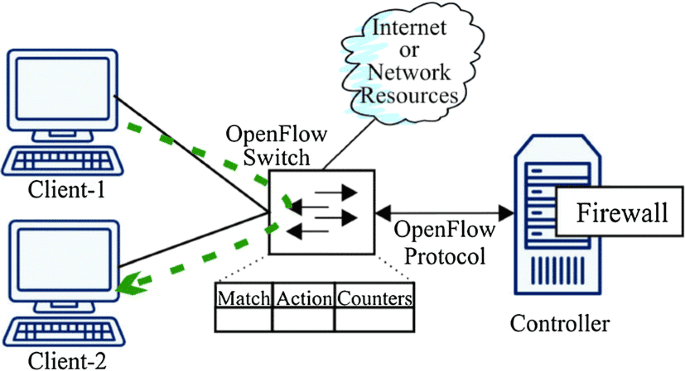What Does Application-Aware Networking Mean?


To improve functionality and efficiency, application-aware networking is a brilliant network framework that can keep track of the software programs on the network. With application-aware networking, you can monitor and manage the applications used on your network. This allows you to ensure that they are being used efficiently and effectively.
Application aware networking also provides greater security for your data, allowing you to control which applications can access what data. This way, if there is an intrusion or attack on your network, only that specific application will be affected, not all of them at once.
Application networking optimizes performance for both users and administrators by allowing them to see where bottlenecks may occur in their system’s usage patterns. It also provides visibility into how different applications perform so that you can identify areas where improvements could be made, e.g., faster response times.
The telecommunications industry has a tough time keeping up with customers’ needs. To maintain your position as a market leader, you must utilize application-aware networking. The universal union of Telecommunications network design is the foundation of application-aware networking.
An intelligent network has particularly improved features created to offer comprehensive functionality. Application-aware networking, like other facets of intelligent networking, is dependent on a method that manages network traffic using a number of layers or planes.
Layers of Application-Aware Networking
The first layer is the access plane which handles incoming calls from users and data packets from across the world. The second layer, called the core layer, manages all traffic going through your network. It also maintains connection quality between different sites in different global locations.
Finally, an edge layer protects your network from external threats by providing high availability against any possible attacks or intrusions into your system by hackers trying to steal valuable information like social security numbers from unsuspecting victims.
How It Improves User Experience
Application-aware networking has been shown to improve user experience in several ways:
- It decreases latency and improves response time for users by providing faster access to application data and reducing wait times for loading web pages or streaming videos.
- It increases security by monitoring traffic patterns and detecting potential threats sooner than traditional monitoring systems allow.
- It decreases costs by optimizing server performance and reducing unnecessary bandwidth usage.
Software-defined networking (SDN) is a way of building networks that separates the control plane from the management plane. It’s a big change from how networks have been built traditionally built, and it has many benefits.
The separation between control and management planes means that the control plane can be abstracted from the physical hardware. It makes it easier to manage and update. This also allows for more automation in network operations, which has significant cost savings potential.
SDN also allows combining multiple networks into one larger network without reconfiguring each component. This is particularly useful when working with cloud providers or third parties who may not share your network topology or architecture.
This gives businesses more flexibility in terms of how they can manage their networks. While it’s true that there is some overlap between these two planes, they have very different functions and therefore require different skill sets to manage them effectively.
Conclusion:
Using application networking will help your business to operate more effectively and efficiently. You will have a better handle on the performance of specific applications. You will also be able to identify any areas where optimization might be needed. It can also provide great protection for the data and different applications on your network, helping defend against cyber threats.
Share This Article
To improve functionality and efficiency, application-aware networking is a brilliant network framework that can keep track of the software programs on the network. With application-aware networking, you can monitor and manage the applications used on your network. This allows you to ensure that they are being used efficiently and effectively.
Application aware networking also provides greater security for your data, allowing you to control which applications can access what data. This way, if there is an intrusion or attack on your network, only that specific application will be affected, not all of them at once.
Application networking optimizes performance for both users and administrators by allowing them to see where bottlenecks may occur in their system’s usage patterns. It also provides visibility into how different applications perform so that you can identify areas where improvements could be made, e.g., faster response times.
The telecommunications industry has a tough time keeping up with customers’ needs. To maintain your position as a market leader, you must utilize application-aware networking. The universal union of Telecommunications network design is the foundation of application-aware networking.
An intelligent network has particularly improved features created to offer comprehensive functionality. Application-aware networking, like other facets of intelligent networking, is dependent on a method that manages network traffic using a number of layers or planes.
Layers of Application-Aware Networking
The first layer is the access plane which handles incoming calls from users and data packets from across the world. The second layer, called the core layer, manages all traffic going through your network. It also maintains connection quality between different sites in different global locations.
Finally, an edge layer protects your network from external threats by providing high availability against any possible attacks or intrusions into your system by hackers trying to steal valuable information like social security numbers from unsuspecting victims.
How It Improves User Experience
Application-aware networking has been shown to improve user experience in several ways:
- It decreases latency and improves response time for users by providing faster access to application data and reducing wait times for loading web pages or streaming videos.
- It increases security by monitoring traffic patterns and detecting potential threats sooner than traditional monitoring systems allow.
- It decreases costs by optimizing server performance and reducing unnecessary bandwidth usage.
Software-defined networking (SDN) is a way of building networks that separates the control plane from the management plane. It’s a big change from how networks have been built traditionally built, and it has many benefits.
The separation between control and management planes means that the control plane can be abstracted from the physical hardware. It makes it easier to manage and update. This also allows for more automation in network operations, which has significant cost savings potential.
SDN also allows combining multiple networks into one larger network without reconfiguring each component. This is particularly useful when working with cloud providers or third parties who may not share your network topology or architecture.
This gives businesses more flexibility in terms of how they can manage their networks. While it’s true that there is some overlap between these two planes, they have very different functions and therefore require different skill sets to manage them effectively.
Conclusion:
Using application networking will help your business to operate more effectively and efficiently. You will have a better handle on the performance of specific applications. You will also be able to identify any areas where optimization might be needed. It can also provide great protection for the data and different applications on your network, helping defend against cyber threats.




